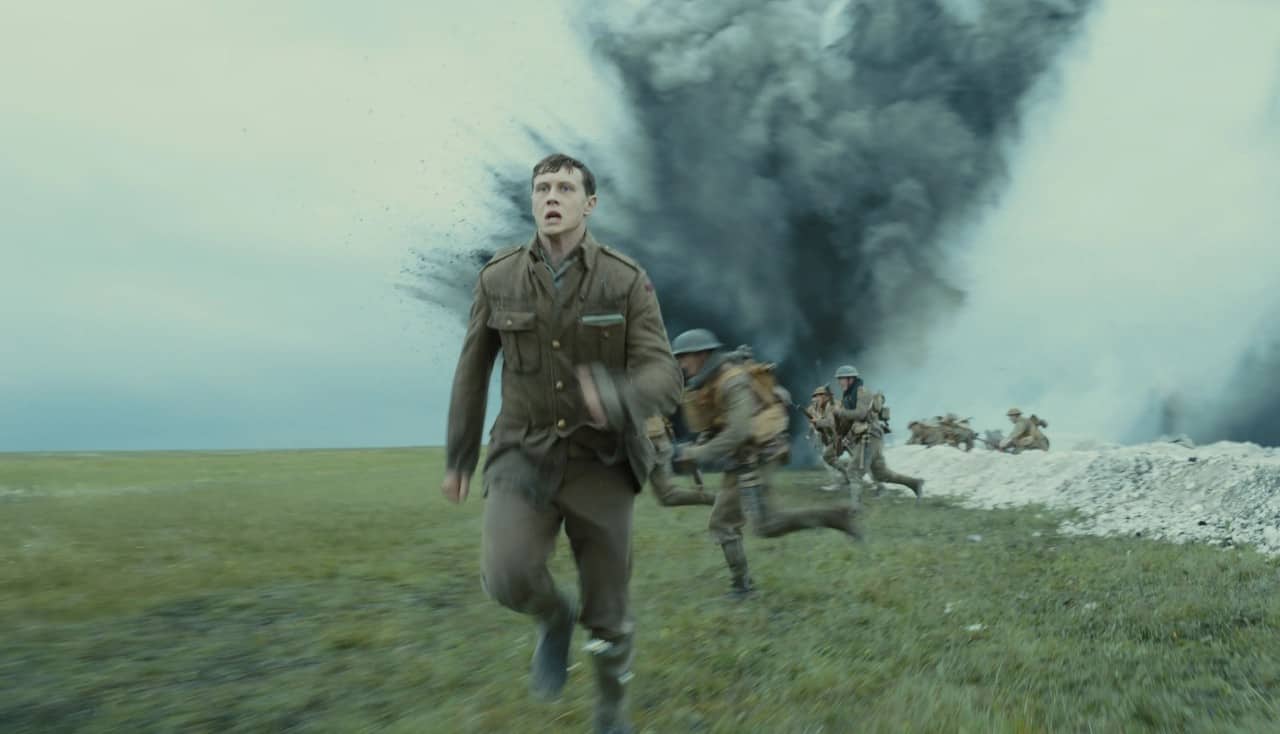On November 13, 1854, Alfred Lord Tennyson opened his morning newspaper, eager for word from far-off Crimea. He read about the Light Brigade, the six hundred cavalry troopers ordered to charge a heavily defended fort, and about their subsequent slaughter. Moved by their courage and sacrifice, Tennyson wrote a poem.
Tennyson was, of course, an abominable poet. A Victorian to the core, he combined religious and imperialist zealotry with a formal stiffness that put his starchiest collars to shame. Tennyson does not lament the foolhardy courage of the Brigade, nor their manipulation by incompetent officers who drove them to their deaths. “Theirs was not to question why,” he instead writes, “Theirs was but to do and die.” “The Charge of the Light Brigade” is an ugly, unforgivable poem, one that glorified war’s tragedies while enriching a man who never fought. As I left a screening of the film 1917, I could think only of Tennyson at his writing desk.
Inspired by his grandfather’s war stories, Sam Mendes chose to tell the story of the First World War not through the eyes of politicians and generals who watched from afar, but the men on the ground. He chooses as his heroes a pair of English riflemen, the young and naive Blake (a bulldog-cheeked Dean-Charles Chapman) and the battle-hardened Schofield (George MacKay, gaunt and ghostly). Together, the two men must cross into no-man’s land and call off a distant regiment’s doomed assault on German trenches.
This premise offers no real surprises. These futile charges that Blake and Schofield hope to stop have been seared into our collective imagination by films such as Kubrick’s Paths of Glory or Mel Gibson’s Gallipoli. This image of great masses of humanity standing as one and charging headlong toward glory, only to be cut down just seconds later, offers a compelling visual metaphor for the senseless waste of the First World War.
In the contemporary imagination, those young men placed their lives in the hands of elders too stubborn to let them stand still and stay safe, and were murdered en masse before they could define themselves as individuals. It is a bleak image, one that backs modern cynicism about the needlessness of war, but does not at all define the suffering presented by artists who served in the trenches.
The men of the Western Front were Victorians. Tennyson, the former Poet Laureate of the United Kingdom, would have been read and even adored by Mendes’ heroes, Blake and Schofield. Those who marched off to war in 1914 valued pointless bayonet charges, and at least initially, longed to take part in them. But the Great War didn’t offer them these opportunities for martial greatness. It offered them only invisible foes, booming cannons, and holes to hide in.
The motif that haunts the work of WWI veterans is therefore not forced motion, but paralysis. War, they saw, was not a grand adventure, but a terrifying exercise in entrenched immobility. The Victorian grand charge became Hemingway’s Nick Adams with two broken legs and a bullet in the spine, Wilfred Owen’s “great green sea” of inescapable gas, Joe Bonham’s suffocating body in Johnny Got His Gun, and Siegfried Sassoon’s insane urge to “go out” and plead with enemy artillery to just stop firing. Men like Blake and Schofield arrived at the front “ardent for some desperate glory.” They instead ducked into holes in the ground where they waited to die, not of wounds incurred during heroic doomed charges, but of dysentery, or mustard gas, or a random artillery shell.
All this makes 1917’s central conceit a betrayal of the very experience Mendes set out to memorialize. Mendes and his Director of Photography Roger Deakins designed the film as a single unbroken tracking shot, following Blake and Schofield for the film’s full two-hour runtime. Mendes therefore thrusts his protagonists into constant motion from the film’s first frames.
Mendes and Deakins have earned rightful acclaim for this technical construction; 1917 flows naturally between quieter moments and the intricate blocking and choreography of action setpieces. They promise staggering technical ambition and deliver on that promise, but in doing so, bypass the human narrative they set out to tell. Mendes claims to memorialize the forgotten stories of the First World War, but like Tennyson before him, fetishizes tragedy to glorify himself.
Perhaps this is unfair to Mendes. 1917 is not necessarily a bad film. Chapman and MacKay make the most of their archetypal roles with tense, physical performances. Deakins constructs haunting, pacifistic images (cherry blossoms drifting onto bloated corpses) that contradict the film’s more jingoistic subtext. Mendes, to his credit, refuses to shy away from either the selfless acts of valor or the sickening violence that war demands of its participants. I believe that Mendes really did set out to honor his grandfather’s heroism. But on that November day in 1854, Tennyson also meant well. They should have thought harder about whose stories they meant to tell.
1917 is currently playing at most major cinemas, including Cobble Hill Cinemas, Williamsburg Cinemas, Nighthawk Prospect Park, and the Brooklyn Academy of Music.









